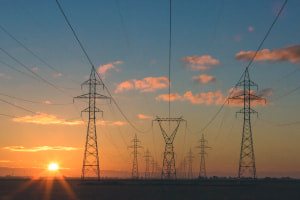The market for renewable energy technologies is growing and there is global interest in new energy transformations. Many factors are leading to this interest and plenty of drivers are pushing us towards this transition. In this course, discover the fundamentals of energy economics by focusing on renewable energy sources. You will begin with the basics, learning about the calculations of CO2 emissions, the cost of saved carbon and the solar energy requirement needed throughout the day. In terms of carbon savings and the cost of saved carbon, we primarily use the concept of ‘certified emission reduction’. One certified emission reduction (CER) represents one tonne of CO2 saved. You will learn about this calculation with the help of detailed illustrations and examples. The control of the release of carbon dioxide and the gradual depletion of fossil resources is posing a severe practical challenge for every country. As a result, there are increased and focused efforts to find economic access to efficient, reusable resources such as biomass, wind energy, solar energy and fuel cells.
This course has detailed discussions on renewable sources of energy, reserves and finite resource constraints. We will introduce you to the McKelvey box, a diagram that shows the difference between resources and reserves. As one travels from resources to reserves, both geologic certainty and economic feasibility increase. You will gain knowledge of this aspect of energy economics as you learn about Hubbert's model, Multi-Hubbert model and Hubbert curve analysis. Depleting a resource occurs when the renewable and non-renewable natural resources become scarce because we consume them faster than they can recover. The term ‘resource depletion’ is commonly associated with water usage, fossil fuel consumption, trees and fishing. However, all of these resources have been depleted primarily because of human activities. Other important points to learn are why the rate at which energy resources are depleted is faster than the rate with which they are replaced. You will also understand about annual fluxes of different types of energy, such as wind energy, solar energy, bioenergy and geothermal energy. Energy flux is the rate of transfer of energy through a surface.
Solar radiation or sunlight is a general term for the electromagnetic radiation emitted by the sun. Solar radiation can be captured and turned into valuable forms of energy, such as heat and electricity, using various technologies. Similarly, according to the European Commission, sea waves have great potential as a renewable energy source. Another source of energy under investigation is geothermal energy, which is heat derived within the sub-surface of the earth. Water and steam carry the geothermal energy to the Earth's surface. Depending on its characteristics, geothermal energy can be used for heating and cooling purposes or be harnessed to generate clean electricity. You will learn the basics of these energy sources in this course. In simple terms, the main aim and scope of energy economics is to study the factors that lead to economic efficiency by optimizing the use of energy commodities and resources. Energy economists are needed to investigate the motivating factors that contribute to changes in the supply and demand for the production, distribution and consumption of energy resources. So enrol for this free course right away!
What You Will Learn In This Free Course
View All Learning Outcomes View Less All Alison courses are free to enrol, study, and complete. To successfully complete this Certificate course and become an Alison Graduate, you need to achieve 80% or higher in each course assessment.
Once you have completed this Certificate course, you have the option to acquire an official Certificate, which is a great way to share your achievement with the world.
Your Alison certificate is:
- Ideal for sharing with potential employers.
- Great for your CV, professional social media profiles, and job applications.
- An indication of your commitment to continuously learn, upskill, and achieve high results.
- An incentive for you to continue empowering yourself through lifelong learning.
Alison offers 2 types of Certificate for completed Certificate courses:
- Digital Certificate: a downloadable Certificate in PDF format immediately available to you when you complete your purchase.
- Physical Certificate: a physical version of your officially branded and security-marked Certificate
All Certificate are available to purchase through the Alison Shop. For more information on purchasing Alison Certificate, please visit our FAQs. If you decide not to purchase your Alison Certificate, you can still demonstrate your achievement by sharing your Learner Record or Learner Achievement Verification, both of which are accessible from your Account Settings.











 Avg. Hours
Avg. Hours  Contains Video
Contains Video  CPD Accredited
CPD Accredited 
 Total XP:
Total XP: 
 Knowledge & Skills You Will Learn
Knowledge & Skills You Will Learn 







